Why Sibiu Baroque Still Matters in the Digital Era?

Sibiu is not a city you merely visit or inhabit; it casts you. It stages you, handing you reasons not only to exist, but to dream with conviction. It is, perhaps, the only Romanian city that makes you feel as though you’ve stepped onto a theatre set assembled three centuries ago. Streets concertina into squares; façades rise with measured cadence; churches beckon you inward; palaces usher you from chamber to chamber. The Baroque has not retired here. It breathes, declaims, and pulls you—gloved hand extended—across time. And in an age when everything flickers past too fast, Sibiu’s Baroque still matters: an architecture of attention, reminding us that beauty can keep its own deliberate tempo.
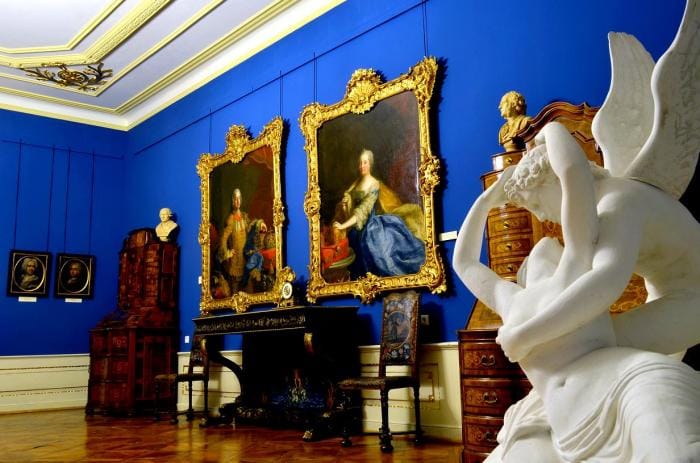
Baroque art and architecture are designed to detain you. Light knifes across stone; diagonals conscript the gaze; ornament applies the brakes. To practise slow looking here is to train the very muscle of attention you’ll deploy everywhere—church, museum, street, screen. Step into Sibiu’s Catholic Church of the Holy Trinity in Piața Mare. Raised by the Jesuits between 1726 and 1733, its façade may read as decorous restraint, but cross the threshold and your freedom is politely revoked. The nave funnels you forward; the gilded high altar arrests your sight; Franz Neuhauser’s Holy Trinity shimmers above; stucco breaks into bloom. Attention is drilled here. You do not wander; you are formed.
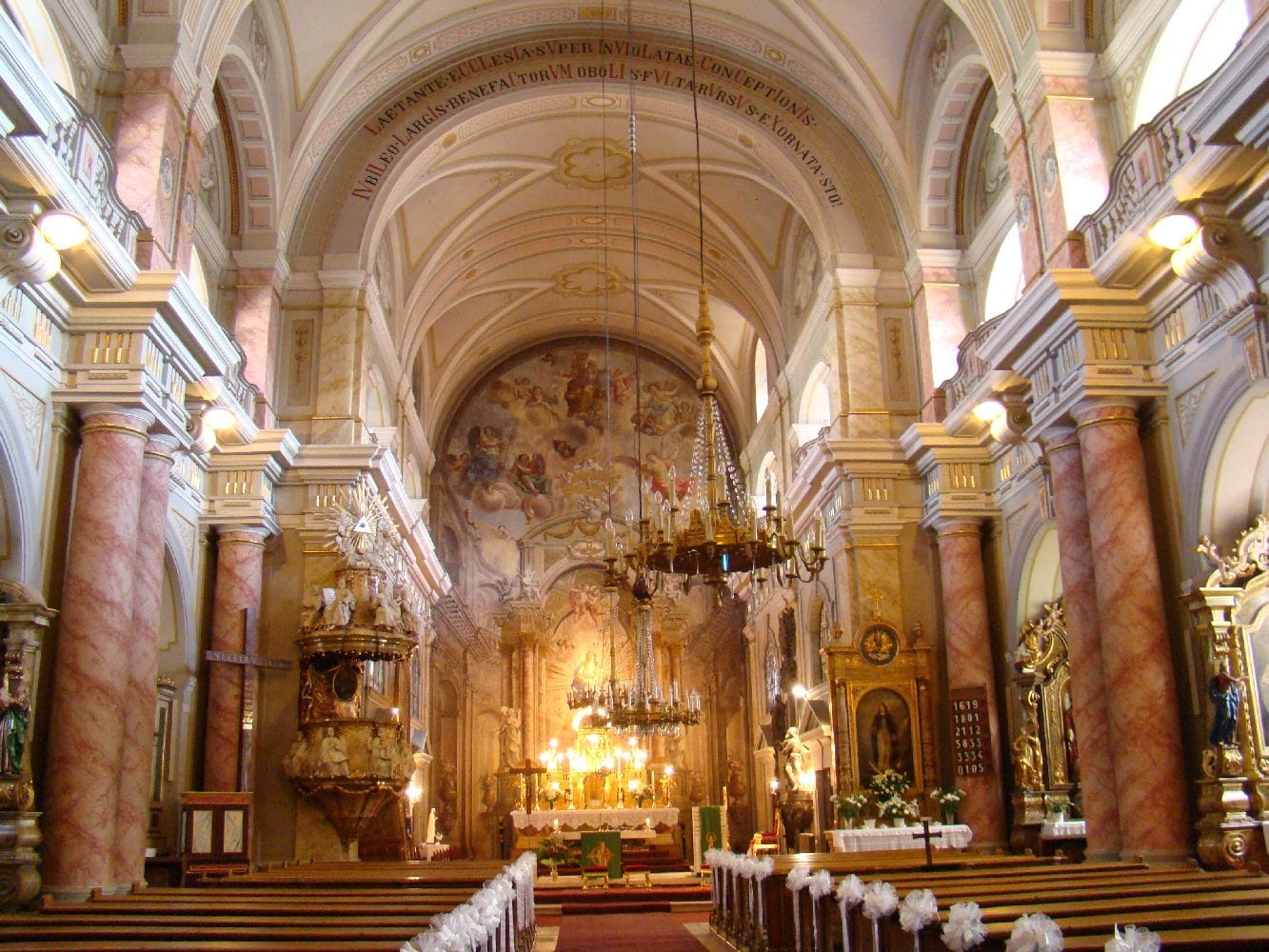
Baroque flowered under the Counter-Reformation and court etiquette: rhetoric cast in stone and pigment. Altars become proscenium arches; sightlines and gestures are stage directions; light is the leading actor, cutting across the scene. At the same time a grammar is at work: diagonals conjugate desire, ornament inserts commas that slow the sentence, chiaroscuro sets the prosody. Master this syntax of space and spectacle declines to grammar—advertising, political mise-en-scène, even interface design, shed their mystique.
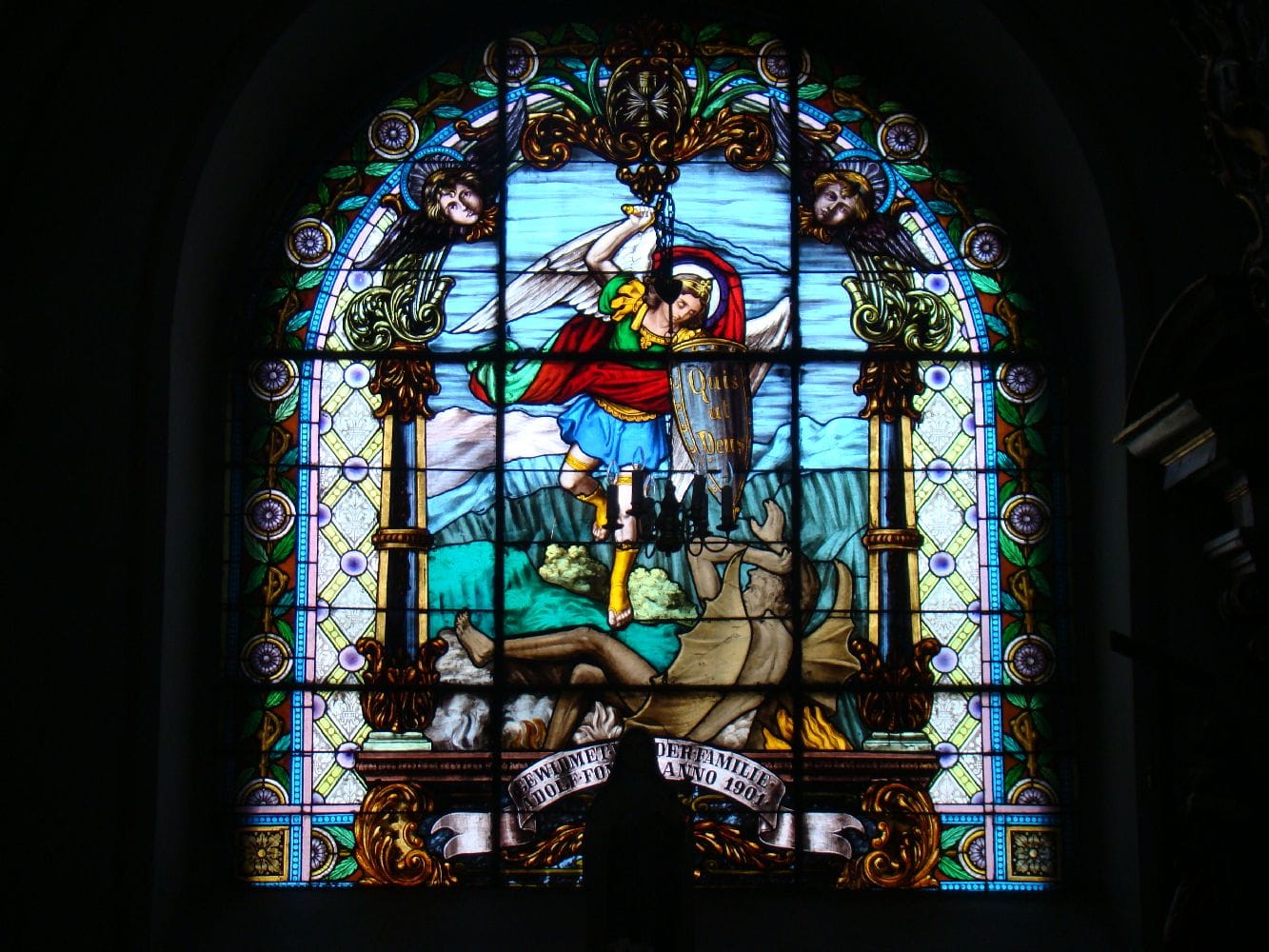
The Ursuline church makes the case plain. Begun in the thirteenth century as a Gothic Dominican foundation, it was recast in 1728 when the Ursulines arrived: Gothic bones in Baroque skin; a fresh dispositio of altars; a pulpit that projects like an orator; windows cut for drama. Here theology refuses abstraction. It argues in gilded rays, in saints’ bodies arced toward ecstasy, in the long grammatical line of the nave that drags the predicate—your body—toward the verb of kneeling. Old and new resolve into persuasive theatre.

Baroque conducts light, sound, and movement—the ur-immersive experience. Chapels dim, music swells, gilding snags the eye. Learn the choreography and you’ll recognise the same sleights in cinema, retail, and events—and deploy them, if you choose, with scruple. Step into the Greek Orthodox Church of the Holy Trinity, raised 1797–99 by the Compania Grecească, the Orthodox merchants’ guild led by Hagi Constantin Pop. The walls draw close, the vault climbs; candles tremble; icons flare gold; incense thickens the air. The whole apparatus moves you before you’ve consented. This was Sibiu’s Baroque Orthodoxy—immersive, emotional, theatrical.
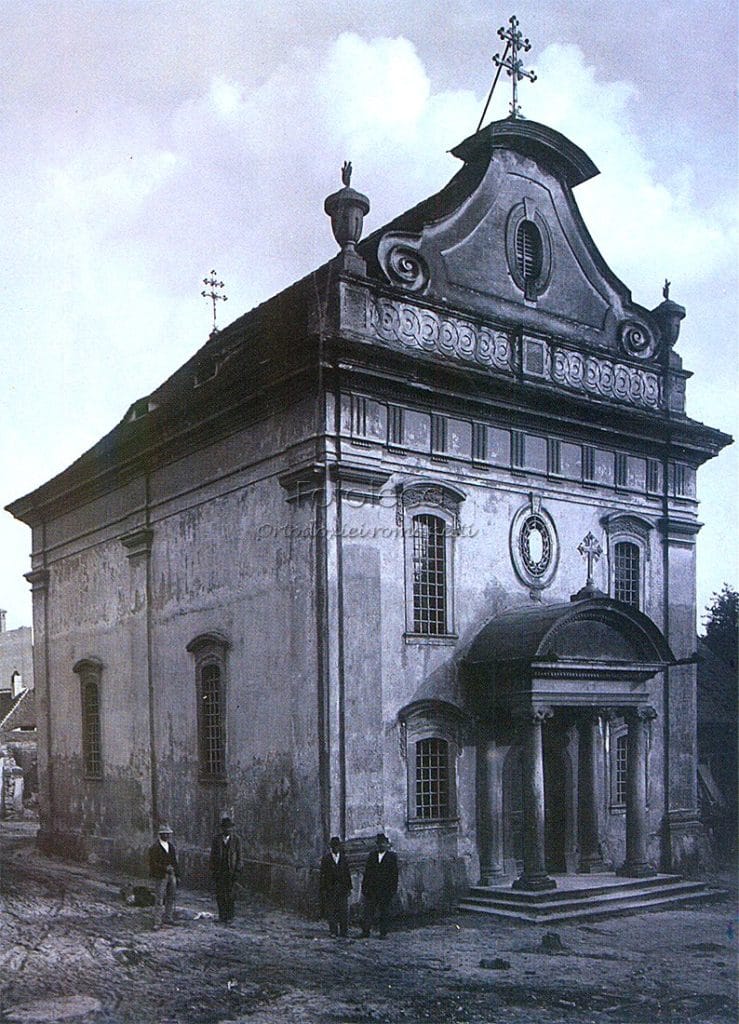
Naves, enfilades, axes, thresholds: Baroque space conducts the body—approach, pause, genuflect, look up. You learn to read rooms as structured arguments, not scenery. That literacy renders every building—palace, church, gallery—legible and consequential. The Franciscan Church, completed in the early 1730s, is Baroque through-and-through. After the fire it rose again: vaults unfurling in stucco arabesque, side chapels quietly shepherding you toward the center. The building’s thesis is plain—humility in the aisles, exaltation in the vault, submission at the altar. To walk here is to be parsed: a sentence in stone that reads you as you read it.
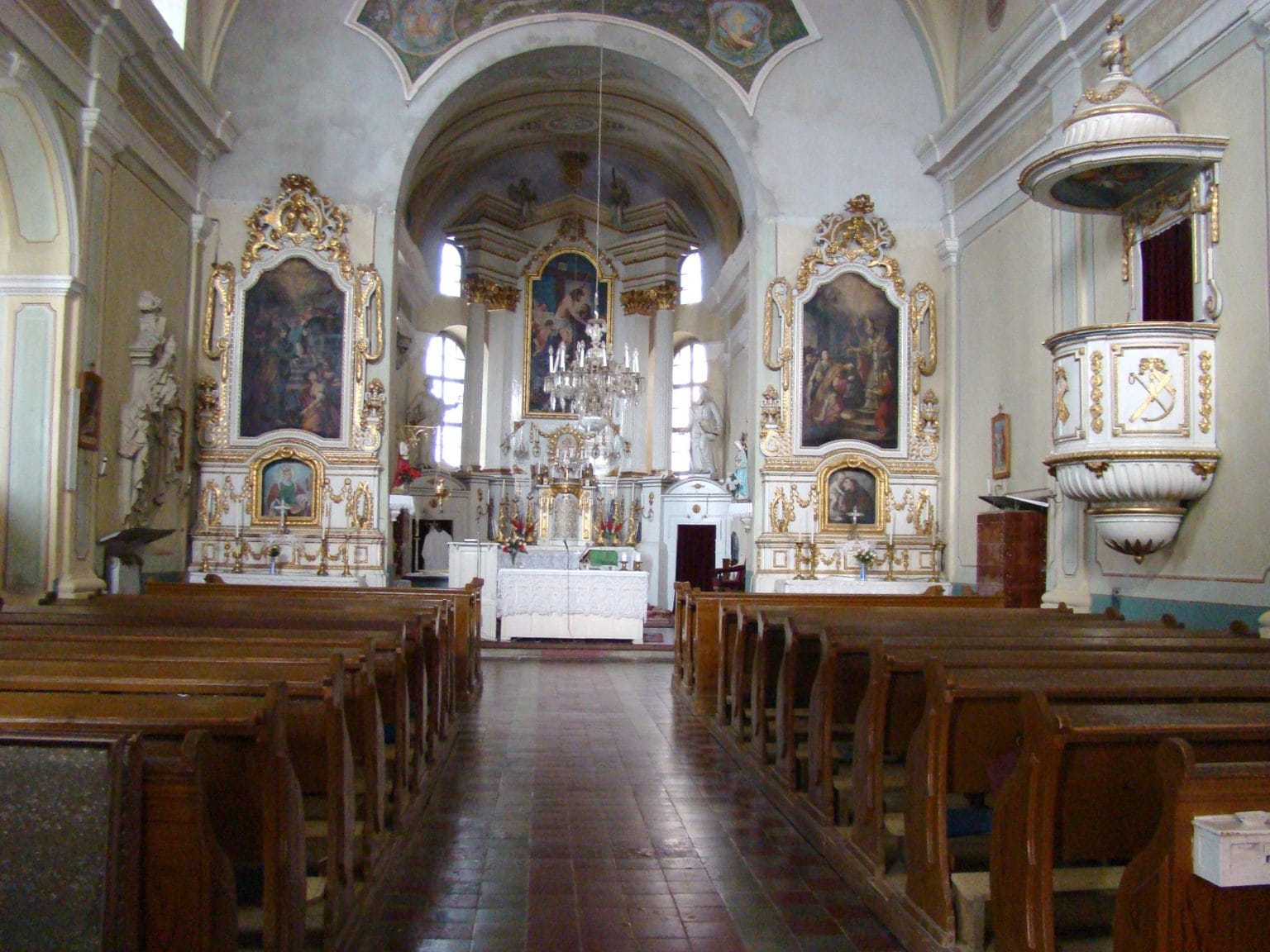
Long before our engineered spectacles, the Baroque had already codified immersion: an orchestration of light, sound, and movement composed to produce enargeia—the felt presence of what is shown. Trompe-l’œil, quadratura, mirrors, forced perspective: an instrumentarium for conducting the eye, lengthening space, and persuading the body. To grasp this choreography is to acquire a critical lexicon with which to recognise its reprises in cinema, retail, and event design—and, if one chooses, to employ them with scruple.
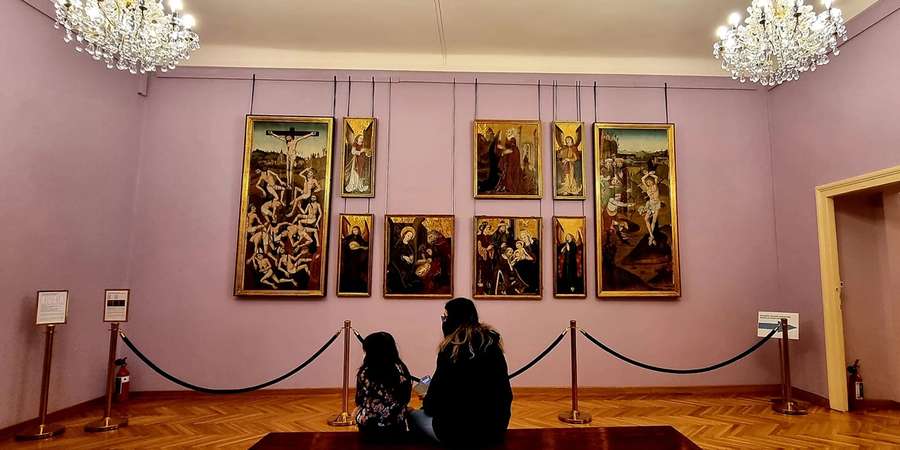
In the Brukenthal galleries, eighteenth-century canvases make the lesson explicit: curtains parted in pigment; ceilings dilated by perspective into open sky; objects rendered with such verisimilitude that touch becomes an impulse to resist. The museum is not neutral; it extends the Baroque’s pedagogy of attention. Beyond the palace, in Sibiel and the villages of Mărginimea, glass icons shimmer by inversion—images painted in reverse to blaze forward through glass: a vernacular optics, a folk Baroque of vision.
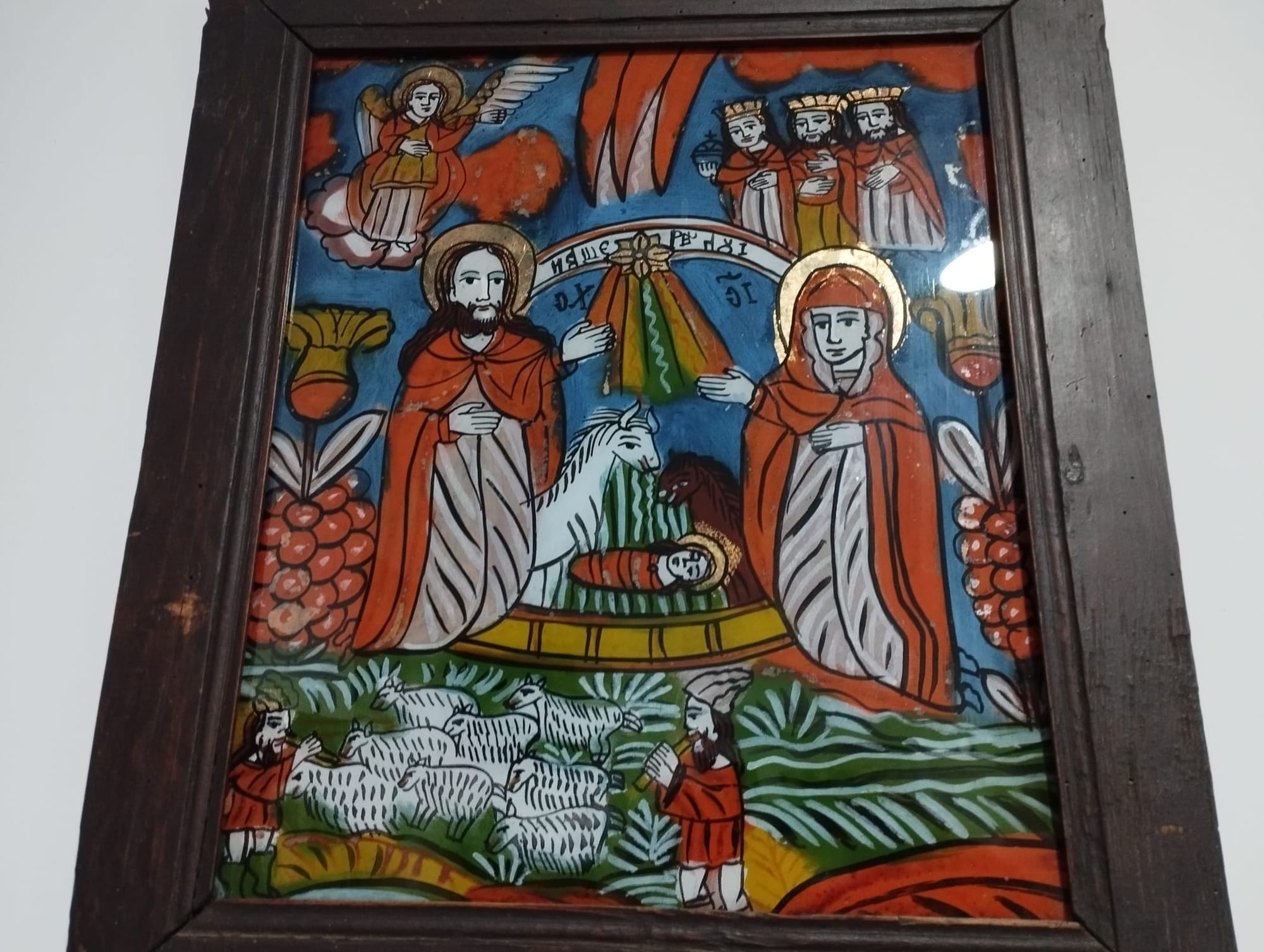
The Baroque did not wait for Wagner to coin Gesamtkunstwerk; it simply practised it—painting, sculpture, architecture, music, and rite braided into a single, staged conviction, a score for bodies in motion. As a template for modern cross-disciplinary work—curating, staging, branding, cultural programming—it remains unnervingly contemporary: a coherent message carried across media, time-coded for entrances and crescendos. Consider Stan Zugravul of Rășinari, who in 1775 frescoed Sibiel’s Holy Trinity: the Byzantine iconographic grammar holds, yet the rhetoric quickens—draperies torque, saints lift on ascensional vectors, clouds part like theatre borders, chiaroscuro bites into contour. Or take Efrem Micu, academically trained, fabricating iconostases as far as Vienna: a village theology articulated with metropolitan draftsmanship, where Orthodox doctrinal order (dispositio) meets late-Baroque ornament—broken pediments, gilded volutes, a rhetoric of light. These are not “just icons”; they are Baroque syntheses—theatrum sacrum in panel and plaster—fusing theatre with theology, parish with capital, continuity with stylistic invention.
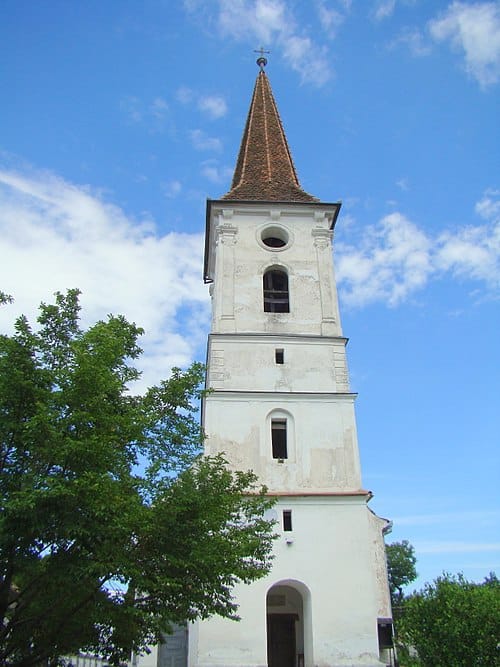
At Brukenthal’s Romanian Art Gallery the frame widens: within those rooms the Baroque portrait is largely a Hospite affair, with Romanian faces assembling in earnest only in the nineteenth century. Step beyond the museum, though—to Sibiel, Rășinari, Săliște—and the Baroque acquires a Romanian accent: painters, patrons, and guildsmen signing themselves in wood, glass, pigment, and gilt. Sibiu’s Baroque speaks in two registers—European and local, Hospite and Romanian, Viennese and vernacular. In an age of engineered attention, this layered bequest still tutors the senses: teaching us how to look and to read, how to parse persuasion rather than be swept by it, and—no small thing—how to feel, and how to care.
References
- Brukenthal National Museum. European Painting Gallery. Guidebook. Sibiu: Muzeul Național Brukenthal, various editions.
- Ghid Mesea-Iulia. Galeria de artă românească. Sibiu: Muzeul Național Brukenthal, 2016.
- Pál, Judit. “The Jesuits and the Catholic Church in Sibiu in the 18th Century.” Acta Historiae 2008.
- Sabău, Ioan. Arta religioasă românească în epoca barocului transilvănean. Cluj-Napoca: Presa Universitară Clujeană, 2012.
- Năstăsoiu, Dragoș. “The Orthodox Iconostasis and Baroque Influences in 18th-Century Transylvania.” Studia Universitatis Babeș-Bolyai, Historia Artium 64 (2019): 85–110.
- Brusanowski, Paul. “The Orthodox and Greek Catholic Churches in Sibiu (18th Century).” Revista Transilvania, 2010.
- Mărginean, Florea. Patrimoniul artistic al Mărginimii Sibiului. Sibiu: Astra Museum Press, 2005.
- Mureșan, Dan. Barocul în arhitectura transilvăneană. Sibiu: Editura Honterus, 1998.
- Ioniță, Corina. Pictura pe sticlă în Transilvania. București: Meridiane, 1981.
- Vătășianu, Virgil. Istoria artei feudale în Țările Române. București: Editura Academiei, 1959.
- Bălan, Ioan. Iconografia ortodoxă din Transilvania în secolul al XVIII-lea. Alba Iulia: Reîntregirea, 2007.
- Moisescu, Cristian. The Baroque in Central and South-Eastern Europe. București: Meridiane, 1980.
- Rusu, Adrian. Arhitectura barocă din Transilvania. Cluj-Napoca: Dacia, 1977.
- Pop, Ioan-Aurel. Romanians and the Baroque Age in Transylvania. Cluj: Academia Română, 2015.
- Băcilă, Doina. Stan și Iacov Zugravii din Rășinari: Pictori de icoane și fresce în secolul XVIII. Sibiu: Editura Astra Museum, 2009.
- Binder, Paul. Sibiu: Arhitectura și istoria urbană. Sibiu: Editura Honterus, 2006.
- Căpraru, Mariana. Arta barocului românesc. București: Editura Meridiane, 1970.
- Marcu, Alexandru. Meșteșug și iconografie în Mărginimea Sibiului. Sibiu: Editura ASTRA, 1992.
- Boia, Lucian. Germania și România: Secole de interferențe culturale. București: Humanitas, 1995. (useful for context of Hospite vs. Romanian cultural interplay).
- International Council on Monuments and Sites (ICOMOS). Baroque Heritage of Transylvania: Reports and Studies, 2001.